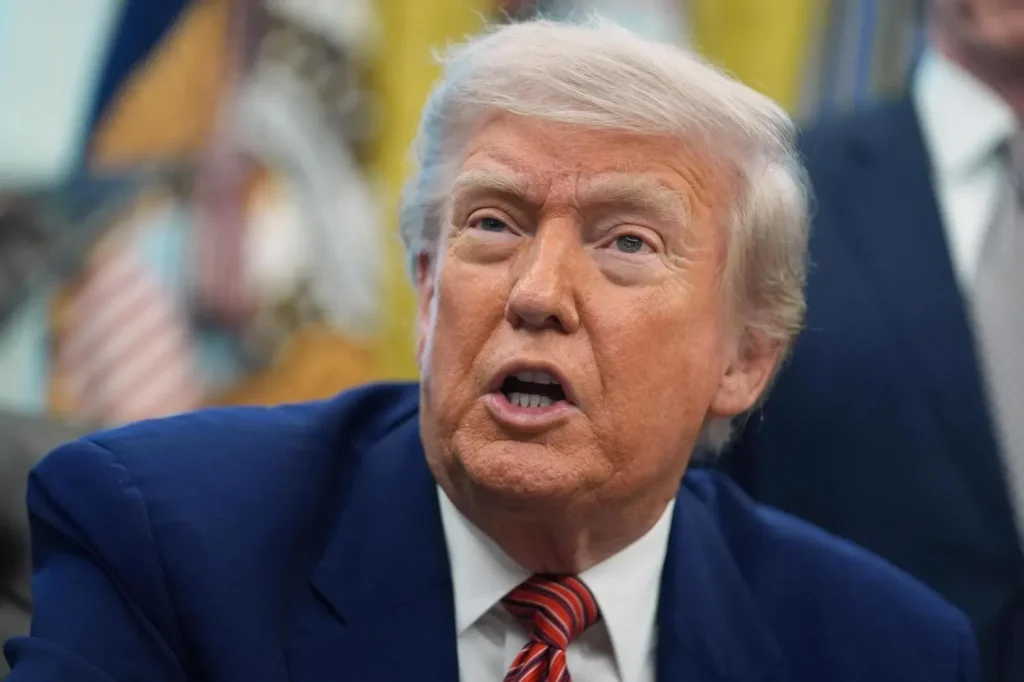The Trump Vietnam trade deal has sparked a wave of analysis among retail executives, as the potential implications of new tariffs loom large over consumer prices. Initially proposed at a staggering 46%, the new tariffs on Vietnamese imports have been brought down to 20%, easing some concerns but still leaving an impact on retail dynamics. Companies like Nike are bracing for a price increase that may pass on the burden of costs to consumers, significantly affecting consumer spending. As Vietnam rises to become the second-largest supplier of footwear and apparel in the U.S. market, the footwear supply chain now hangs in the balance, with retailers weighing their options. With the stakes high, these Vietnam tariffs could ripple through the economy, forcing adjustments in how consumers spend their money on everyday products.
In the wake of economic negotiations, the tentative agreement concerning Vietnamese trade is poised to reshape the retail landscape. Dubbed the Trump Vietnam trade deal, this initiative represents a strategic shift that could redefine sourcing strategies for major brands and affect pricing structures across the footwear and apparel sectors. With Vietnam’s role as a primary hub for manufacturing and supply chain solutions expanding, executives are keenly aware of the deal’s potential ramifications on retail operations. The adjustment of tariff rates from proposed highs provides a glimmer of hope, but the threat of increased costs still shadows the market. As the specter of price hikes looms, the intersection of trade policies and consumer behavior continues to be a critical focal point for businesses and shoppers alike.
Understanding the Trump Vietnam Trade Deal
The Trump Vietnam trade deal represents a significant moment in U.S.-Vietnam relations, particularly impacting the retail sector. Initially proposed tariffs of up to 46% on Vietnamese imports sent ripples of concern across the industry, as Vietnam has become a vital hub for U.S. retailers aiming to escape higher Chinese tariffs. The preliminary agreement to settle on a 20% tariff rate brings a sense of relief, yet raises questions about its long-term implications for consumer prices and market stability.
As Vietnam continues to bolster its position as the second-largest supplier of footwear and apparel to the U.S., the effects of Trump’s trade policies could reshape the retail landscape. Retail executives are cautiously optimistic, believing that while a 20% tariff is lower than initially proposed, it still poses challenges. The potential price hikes for consumers, coupled with ongoing uncertainties regarding supply chains, could strain budgets and impact overall consumer spending.
Frequently Asked Questions
What is the impact of the Trump Vietnam trade deal on Vietnam tariffs for retailers?
The Trump Vietnam trade deal has proposed a reduction of tariffs on Vietnamese imports to 20%, down from the previously suggested 46%. This is seen as a relief for retailers who rely heavily on Vietnam, now the second-largest supplier of footwear and apparel to the U.S. However, even this lower tariff could lead to price increases affecting consumer spending.
How are Vietnam tariffs influencing Nike’s pricing strategy?
The Trump Vietnam trade deal’s proposed 20% tariffs are prompting Nike to consider raising prices on its products. Initial analysis suggests that a hike due to tariffs could significantly increase the cost of goods, such as shoes, leading to higher retail prices that may eventually impact consumer behavior and spending.
What effect do the new tariffs from the Trump Vietnam trade deal have on consumer spending?
The proposed 20% tariffs from the Trump Vietnam trade deal are expected to increase retail prices, which could cool consumer spending. Although the new rate is better than the previous 46%, it’s still a substantial increase that retailers might pass on to consumers, leading to less disposable income for other purchases.
How does the Trump Vietnam trade deal affect the footwear supply chain?
The Trump Vietnam trade deal, with its associated tariffs, has implications for the footwear supply chain, with Vietnam being a key player. The increase in tariffs could lead to higher prices for retailers and consumers, pushing companies to reconsider their supply chain strategies and potentially impacting product availability.
What recommendations do experts have regarding the Trump Vietnam trade deal and its impact on retail?
Experts suggest that retailers adapt by analyzing their pricing strategies and exploring ways to offset tariff impacts from the Trump Vietnam trade deal. This may involve negotiating with suppliers or absorbing some costs to mitigate price increases that could deter consumer spending.
Why are Vietnamese imports crucial for the U.S. retail market under Trump’s trade policies?
Vietnamese imports have become essential due to the trade tensions with China. The Trump Vietnam trade deal solidifies Vietnam’s role as a primary supplier for various sectors, including footwear and apparel, which many U.S. brands have turned to in response to high tariffs on Chinese goods.
What are the long-term implications of the Trump Vietnam trade deal on U.S.-Vietnam trade relations?
The long-term implications of the Trump Vietnam trade deal may include strengthened trade relations as both nations seek mutual benefits. The agreed-upon tariffs can set a precedent for future negotiations with other Southeast Asian countries, fostering an environment of collaboration amidst changing global trade dynamics.
How might upcoming changes in tariffs affect Nike’s sales and consumer behavior?
Upcoming changes from the Trump Vietnam trade deal that could raise tariffs may lead Nike to increase product prices, thereby affecting sales volume. As shoes and apparel become more expensive, consumer behavior may shift, resulting in reduced spending and potentially altering Nike’s market strategy.
What strategies are retailers considering to mitigate the impact of tariffs from the Trump Vietnam trade deal?
Retailers are considering various strategies, including renegotiating supplier contracts, exploring alternative sourcing options, and implementing cost-sharing arrangements to mitigate the financial burdens imposed by tariffs from the Trump Vietnam trade deal.
| Key Point | Details |
|---|---|
| Tariffs on Vietnamese Imports | Tariffs proposed to be 20%, down from a previously suggested 46%. |
| Impact on Retail | Higher tariffs expected to lead to increased consumer prices, potentially reducing spending. |
| Vietnam’s Role in Retail | Vietnam is the second-largest supplier for U.S. footwear, apparel, and accessories. |
| Future Tariff Deals | Tentative agreements with Cambodia, Malaysia, and Bangladesh may follow. |
| Concerns from Retailers | Retailers express worry about the detrimental effects on business and consumer spending. |
Summary
The Trump Vietnam trade deal has significant implications for retailers and consumers alike, primarily due to the tariffs associated with Vietnamese imports. While the announced 20% tariff is a relief compared to the feared 46%, it nonetheless raises concerns about higher consumer prices and potential decreases in spending. As Vietnam solidifies its role as a key supplier for U.S. apparel and footwear, the deal highlights the ongoing shifts in trade dynamics and their impact on the retail industry.



